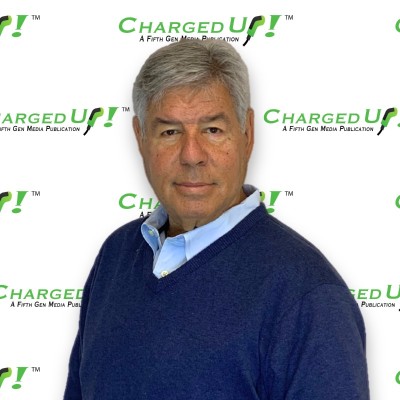Recruiting as Uptime Strategy: How Who You Hire Defines Your Reliability
- Rich Berliner

- Sep 30
- 4 min read

Across the EV charging industry, everyone sells “uptime.” It’s in every RFP, sales deck, and booth pitch. In practice, uptime isn’t just a product of software, spare parts, or service-level agreements. More often than not, it reflects hiring decisions made before a single charger is even installed.
September 2025 finds the charging landscape more crowded than ever. There are more ports in the ground, more sponsors staking claims, and more contracts with penalties for downtime. Behind the headlines about installations and incentives, the quiet differentiator is people. Hire well, and projects energize on schedule, repairs close out on the first visit, and drivers come back without thinking twice. Hire poorly, and you could face missed deadlines, penalty payments, and customer churn.
“Talent is your uptime hedge,” says Carrie Charles, CEO of Broadstaff, a staffing firm focused on placing candidates in the telecommunications and digital infrastructure spaces. “In a crowded market, the operators who win aren’t louder—they’re more reliable. Reliability is a hiring outcome first, a marketing message second.”
Uptime Is People Work
It’s tempting to think of reliability as merely a technology solution—something that can be enhanced by better firmware, smarter diagnostics, or more sensors at the charger. While all of those components help, even the most advanced systems rely on human execution. Someone has to catch a missing easement detail that would stall utility approval, swap the cable on a Saturday night when a driver reports a fault and call the carrier when a modem won’t reconnect.
That’s why uptime is ultimately a people problem. A field technician who can close a ticket on the first visit, a project manager who keeps a civil crew and an inspector aligned, a reliability engineer who spots anomalies in OCPP logs before they turn into outages—these are the difference-makers that protect a provider’s revenue and reputation.
Buyers understand this critical importance. Developers, landlords, and fleet managers evaluate staffing competence the same way they evaluate risk on a multimillion-dollar investment: as the single best predictor of whether that team will deliver results and save them from a crisis.
Recruiting as Revenue Protection
All of these factor place recruiting beyond the sphere of a company’s Human Resources department and directly to the heart of its profit and loss. A single bad hire responsible for finding and developing a site can delay the activation of a charging station (energization) by two to three months, a direct hit to the long-term value of the entire project. Furthermore, a constant stream of poorly trained contractors creates frequent, unpredictable problems, driving up the amount of time it takes to fix a broken charger and turning expensive penalty fees for service guarantees into a regular, unavoidable cost.
On the flip side, strategic recruiting directly preserves revenue. Every hour shaved off MTTR (Mean Time to Repair) saves sessions, protects customer satisfaction, and prevents lost rent or penalty fees. For providers bidding in a hyper-competitive market, that’s not just operations discipline—it’s sales enablement.
“Make the first 30 days painfully clear,” Charles adds. “People don’t fail in charging because they can’t learn; they fail because we don’t tell them what winning looks like.”
What Stakeholders Should Watch
For charge point operators and manufacturers, the mandate is simple: treat recruiting as a go-to-market workstream. Sales can’t sell what operations can’t energize. That means budgeting for certifications up front, building benches of apprentices and senior techs, and treating onboarding as a KPI tied directly to MTTR and first-time fix rates.
For landlords, developers, and asset managers, diligence extends to the human layer. When evaluating a partner, ask about staffing ratios, technician turnover, and training hours per quarter. Require a named project manager of record—with a deputy—so vacations don’t derail energization. Reliability isn’t abstract; it’s measurable in the way teams are staffed and managed.
The Competitive Edge in 2026
In a market this noisy, vendors won’t win just by shouting louder at conferences or publishing more spec sheets. The real competitive advantage will belong to teams that execute predictably: sites energized on schedule, tickets resolved without repeat visits, and customers reassured that charging “just works.”
That consistency doesn’t happen by accident. It starts with recruiting. Companies that align hiring with revenue —tying job scorecards to uptime outcomes, assessing candidates in the field, and measuring onboarding against financial KPIs—will be the ones turning contracts into long-term customer relationships.
The Bottom Line
The EV charging race won’t be decided by who has the flashiest app or the biggest booth. It will be decided by who can keep chargers humming when the grid is slow, the inspector is cranky, or the modem drops off at midnight. That resilience begins with people.
Know who you hire. Your uptime—and your growth—depend on it.
About Us
ChargedUp! is one of the most widely read publications in the EV charging space. Our approach is to take topics that are of interest to everyone and mention companies that provide best-in-class approaches.
To discuss including your products or services, contact us at info@chargeduppro.com. At ChargedUp!, we are committed to keeping businesses and individuals informed about the evolving EV landscape.
For more updates and insights, subscribe to our newsletter at chargeduppro.com.






Comments